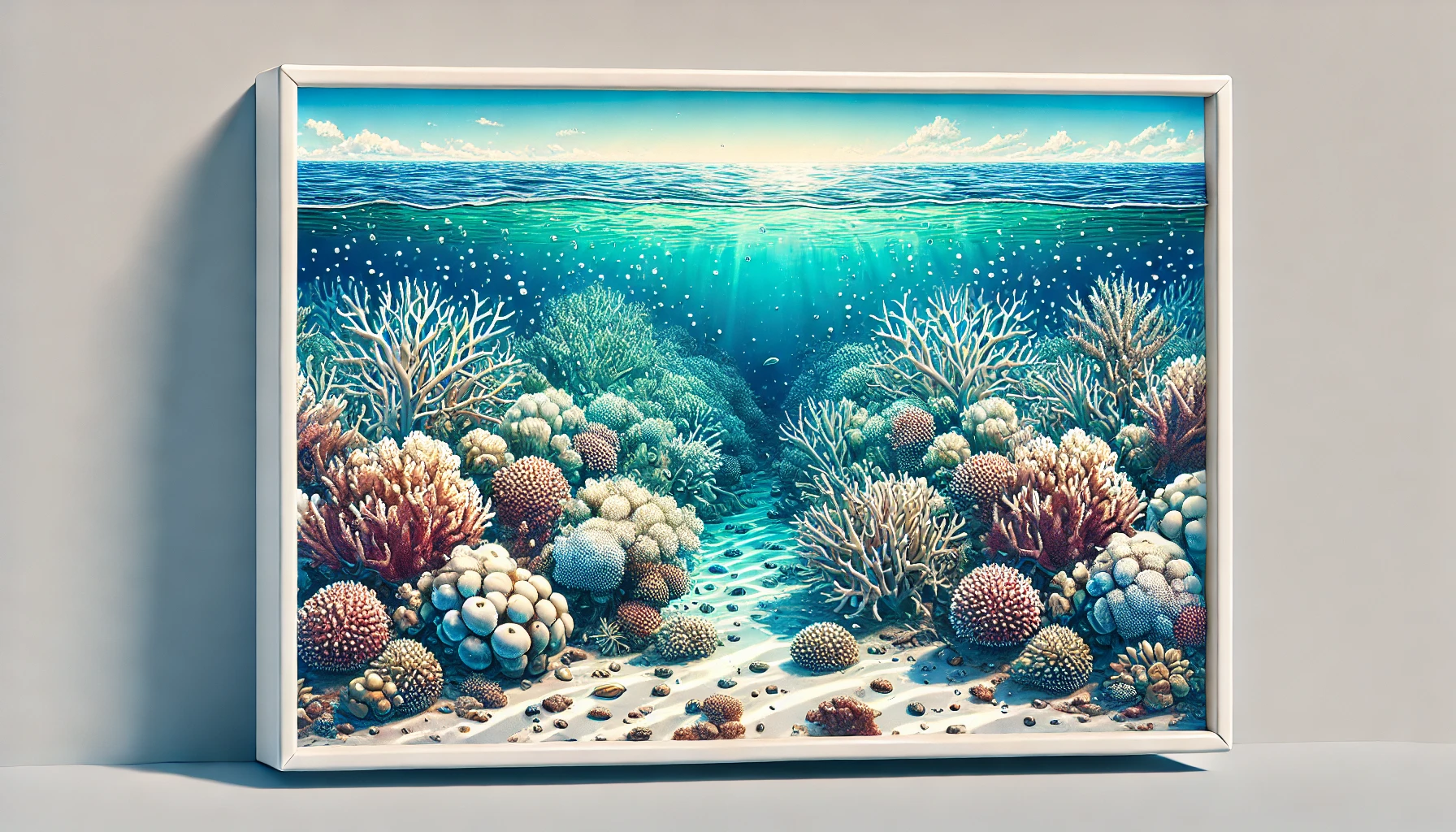The Great Barrier Reef experienced severe coral bleaching in early 2024, with over 40% of monitored corals around One Tree Island affected and significant coral loss recorded across multiple sectors. This decline, exacerbated by heat stress, flesh-eating disease, and rising ocean temperatures, threatens the reef’s World Heritage status and highlights the urgent need for increased conservation efforts to combat climate change impacts.
Widespread Coral Bleaching:
- Over 40% of corals monitored around One Tree Island in the southern Great Barrier Reef were bleached due to heat stress in early 2024.
- By July, 193 corals were dead, and 113 showed signs of bleaching.
Significant Coral Loss:
- The largest annual decline in hard coral cover since monitoring began in the 1980s was recorded in the Capricorn-Bunker sector, with a 41% drop.
- Similar declines were noted in the northern section of the reef, described as a “graveyard of corals.”
Flesh-Eating Disease:
- Some corals, particularly the Goniopora genus, were affected by a black band, a flesh-eating disease that exacerbated the damage.
Heat Stress:
- March, the peak month for reef heat stress, saw temperatures 1.2°C above average across most of the marine park.
- The US Coral Reef Watch program predicts further bleaching in areas north of Cooktown by mid-February.
Research Insights:
- Study led by Prof. Maria Byrne (University of Sydney) tracked 462 coral colonies with temperature loggers and direct observation.
- Dr. Shawna Foo, co-author, observed widespread coral degradation, with colonies turning to algae-covered, dead, or crumbling forms.
Climate Change Pressure:
- WWF-Australia highlighted ongoing heat stress and the risk of back-to-back bleaching events, likening the situation to “Russian roulette.”
- The reef’s World Heritage status is under threat due to climate change impacts.
Coral reefs cover only 0.1% of the Earth’s surface, yet they support 25% of all marine species, including:
- 600 types of coral
- 100+ species of jellyfish
- 3,000 species of mollusks
- 5,000 species of worms
- 1,625 species of fish
- 133 species of sharks and rays
- 30+ species of whales and dolphins
Coral Bleaching in the Great Barrier Reef:
- 93% of the reef has been affected by bleaching.
- 22% of the coral has died due to bleaching.
Reference: The Guardian, National Geographic

